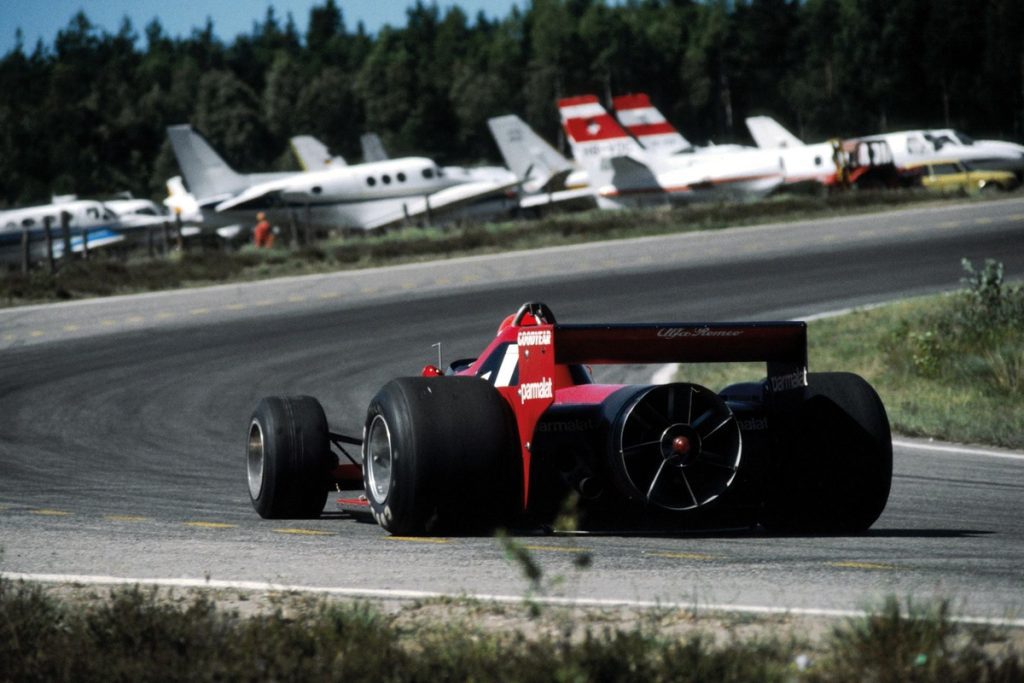Formula 1 victories are achieved on the racetrack, but the preparation for a successful car starts months in advance of race weekends. Leading up to each season, engineers and designers meticulously analyze the regulations, aiming to uncover any loopholes that can be leveraged for greater speed.
Sometimes, the advancements push the envelope, leading to outright rule violations. In such cases, if an innovation either jeopardizes safety or brings success, it may be banned by the FIA, F1’s governing body. This can result in entire vehicles being disqualified from races or teams required to modify their designs to adhere to regulations.
So, what notable innovations have been banned in F1’s 75-year history? Here are ten of the most well-known banned technologies in the sport.
Brabham BT46B – ‘The Fan Car’
The Brabham BT46B initially appears similar to other Formula 1 cars from the 1970s, featuring a low profile and basic wings. However, it included an innovative fan designed to enhance downforce.
Debuting at the 1978 Swedish Grand Prix, this “Fan Car” utilized a fan connected to the gearbox, diverting approximately 30hp to create a powerful airflow beneath the car. The result was a significant downforce that helped Niki Lauda secure a win in Sweden. Despite not being banned at its first race, a regulation change in 1979 would have rendered it illegal for future competitions.
Ground Effect
The Brabham fan car was developed to compete with the ground effect cars from Lotus, which used skirts to enhance downforce. This principle helped Team Lotus claim its seventh constructor’s title in 1978. As other teams adapted, the downforce increased, enabling faster lap times.
However, the risk of losing downforce if the seal broke led to a ban on ground effect cars for the 1983 season. Ground effect made a comeback in 2022 without skirts, aiming to improve safety.
Six-Wheeled Cars
Enter the Tyrrell P34, a distinctive 1982 model featuring six wheels—four at the front. This design aimed to enhance traction and braking performance, albeit at the cost of extended pit stops.
Despite initial success, including a race win, the design faced limitations due to the scarcity of specialized mini tires and was banned in the 1980s, as regulations stipulated a four-wheel requirement.
Active Suspension
By the early 1990s, teams began incorporating digital technologies like active suspension, which could adjust stiffness and ride height. Lotus pioneered this technology, with a notable victory at the 1987 Monaco Grand Prix.
The capability to optimize stability contributed to rapid speed increases; however, the accompanying complexities and costs led to its prohibition starting in 1994.
Mass Dampers
Initially used in skyscrapers, mass dampers found their way into Formula 1 around the mid-2000s. These devices helped improve stability by offsetting vibrations, enhancing driver confidence.
Renault’s R25 car utilized a tuned mass damper, contributing significant performance gains. However, following protests in 2006, the FIA banned the device, determining it unfairly enhanced aerodynamic output.
Double Diffuser
In 2009, the introduction of regulations to reduce downforce led to the innovative double diffuser, exploited effectively by teams like Brawn GP. The device generated additional aerodynamic channels without violating regulations, allowing Brawn to secure early-season victories.
While initially controversial, nearly every team adopted double diffusers by year’s end, but regulations in 2011 essentially closed the loophole.



